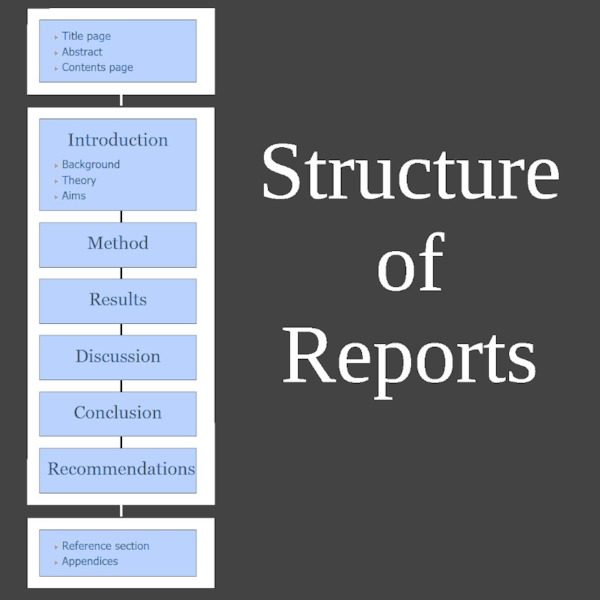Structure of a Report

The structure of a report typically consists of several key components arranged in a logical sequence. While the specific structure may vary depending on the purpose and requirements of the report, a common structure often includes the following sections:
Title Page: The title page contains essential information about the report, such as the title, author(s), affiliation(s), date of submission, and possibly a logo or other identifying information.
Abstract or Executive Summary: This section provides a concise summary of the main points and findings of the report. It should give readers a clear overview of the report's content, key findings, and recommendations without needing to read the entire document.
Table of Contents: For longer reports, include a table of contents listing the main sections, subsections, and page numbers to help readers navigate the document easily.
Introduction: The introduction sets the context for the report by providing background information, stating the purpose and objectives, and outlining the scope and structure of the report. It should capture the reader's attention and provide a clear rationale for why the report was written.
Methodology or Approach: If applicable, include a section describing the methodology or approach used to collect data, conduct analysis, or carry out research for the report. Provide details about the research design, data collection methods, analysis techniques, and any limitations or constraints.
Findings or Results: Present the main findings or results of the report in a clear and organized manner. Use headings, subheadings, and visual aids such as charts, graphs, and tables to help illustrate key points and trends. Provide relevant data, evidence, or examples to support your findings.
Analysis or Discussion: Analyze and interpret the findings in the context of the report's objectives, research questions, or hypotheses. Discuss the significance of the findings, identify patterns or trends, and explore any implications or recommendations arising from the analysis.
Recommendations: Based on the analysis and findings, make specific recommendations for action or further investigation. Provide clear, actionable recommendations that address the issues or challenges identified in the report. Consider including short-term and long-term recommendations, as well as potential risks or considerations.
Conclusion: Summarize the main points and findings of the report, reiterating the key takeaways and emphasizing the importance of the findings. Avoid introducing new information in the conclusion and focus on reinforcing the main messages of the report.
References or Bibliography: Provide a list of sources cited in the report, following a consistent citation style (e.g., APA, MLA). Include all relevant sources, such as books, articles, reports, websites, and other references used to support the content of the report.
Appendices: Include any additional supplementary materials, data, or documentation that supports the findings or analysis of the report. Appendices may include raw data, detailed tables or figures, survey instruments, interview transcripts, or other relevant information that enhances the understanding of the report.
By following this structured approach to report writing, you can effectively organize and communicate your ideas, findings, and recommendations in a clear and coherent manner. Adjustments to this structure may be necessary based on the specific requirements and conventions of your organization or field of study.
Thank you,